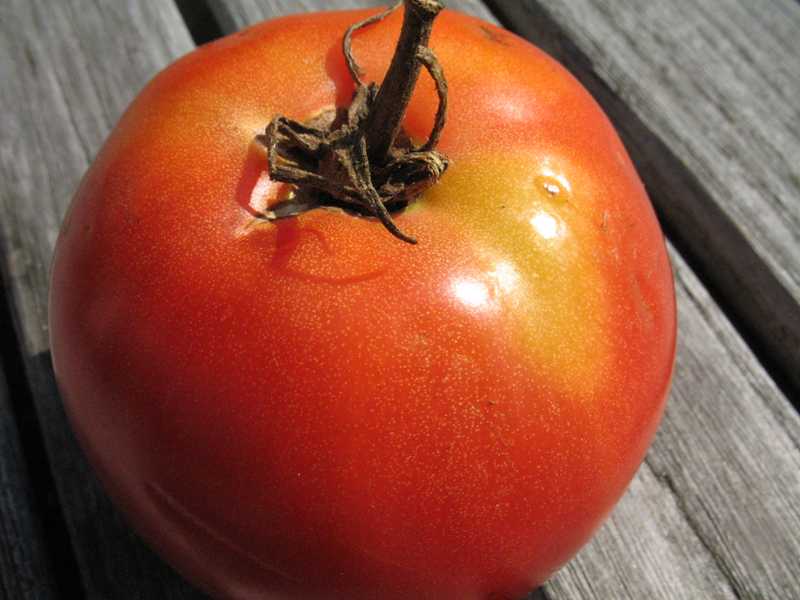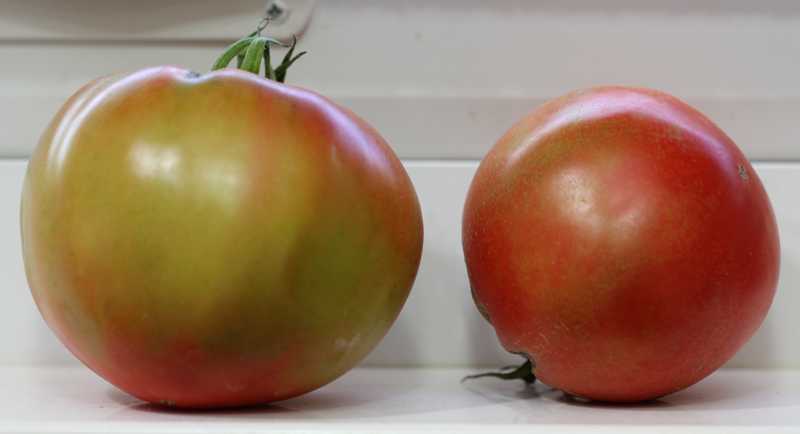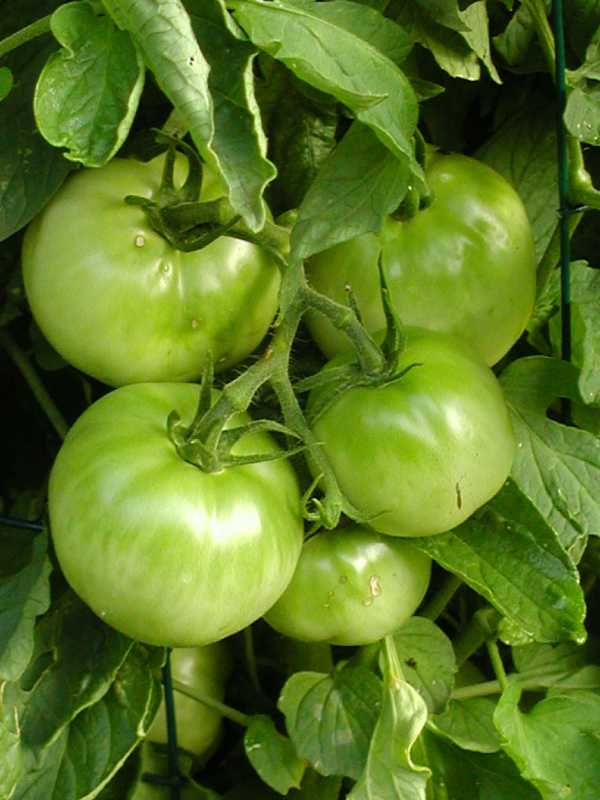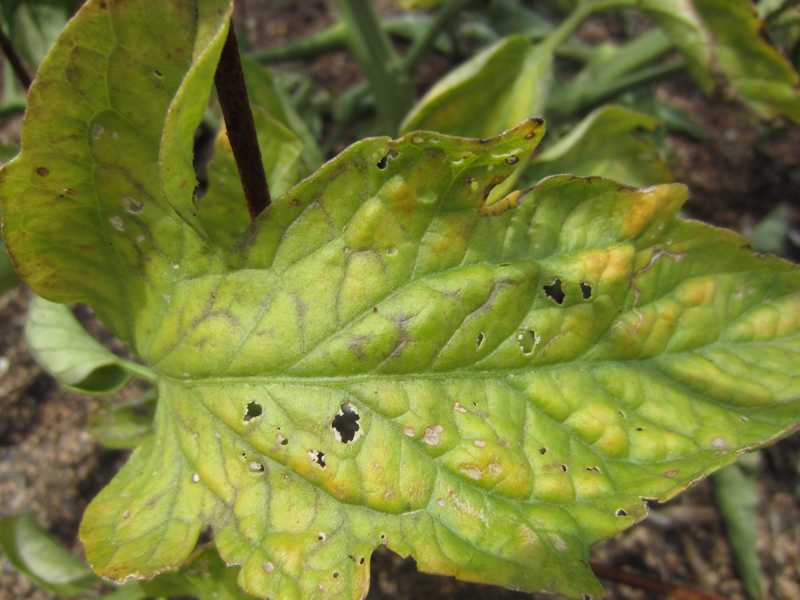Like most plants, tomatoes can be affected by deficiencies in macronutrients (nitrogen, phosphorus, potassium, calcium, magnesium and sulfur), and micronutrients (primarily iron, but also manganese, copper, zinc, boron, chlorine, molybdenum, and nickel). Following is a list of the symptoms associated with some of the more common nutrient deficiencies of tomato. Nutrients may be deficient in the soil or environmental conditions, such as water-soaked soil, may prevent nutrients from being taken up by the plant even though they are present in the soil. For possible control measures, see: Integrated Pest Management Strategies below.
|
1. Nitrogen deficiency can result in stunted plants. It begins with the oldest leaves turning yellow, followed by younger leaves turning greenish yellow. The obvious solution is to fertilize, but beware; too much fertilize can contribute to many of the problems listed above.
|
|
2. Phosphorus deficiency causes the leaves on young plants to turn purplish and the undersides of the leaves on older plants to turn reddish-purple.
|

M.A. Hansen, VPISU, Bugwood.org

M.A. Hansen, VPISU, Bugwood.org

M.A. Hansen, VPISU, Bugwood.org |
3. Potassium deficiency causes the margins of new leaves to turn yellow. As it progresses the tissue between veins dies and becomes leathery while the veins remain green. A lack of potassium can produce yellow shoulders on tomato fruit and prevent fruit from ripening. Since too much potassium can prevent plants from absorbing nutrients, a soil test is needed to correct a potassium deficiency.
|
|
4. Magnesium deficiency shows as interveinal yellow beginning on the oldest leaves and progressing on to younger leaves. The midribs of the veins remain green while the rest of the leaves die. |
|
5. Manganese deficiency affects the leaves at the ends of the shoots. The tissue between the veins puckers and the top of each pucker turns yellow.
|

M.A. Hansen, VPISU, Bugwood.org |
6. Iron deficiency in tomatoes results in a condition common to many plants called iron chlorosis. This affects the new growth first, turning the tissue between the leaf veins yellow while the veins themselves remain green. It is commonly caused, not by a lack of iron in the soil, but by soil that is too "sweet" or alkaline. Tomatoes prefer acidic soil (pH 6.2-6.8) and cannot absorb iron if the soil pH is too high. Adding lime indiscriminately can make the soil too alkaline for tomatoes to grow. Never add lime, wood ash, or other soil sweeteners without a pH test confirming the need for it.
|
Integrated Pest Management Strategies
1. Provide proper growing conditions. For an overall guide, see the Kemper Factsheet: Tomatoes.
2. Modify your fertilizing practices. Use a fertilizer high in superphosphate and low in nitrogen. When adding nitrogen, use calcium nitrate rather than ammonia or urea forms. For care of tomatoes see the Kemper Factsheet: Tomatoes.
3. Get a soil test. If the above methods do not correct the problem, get a soil test, which will include a test for organic matter and pH. Tomatoes prefer acidic soil (pH 6.2 to 6.8). Since soils in the St. Louis area tend to test as neutral (7.0) or above (although there are exceptions), do not apply lime or wood ash unless a pH test recommends it. Both lime and wood ash raise the soil pH; sulfur on the other hand reduces pH.
Organic Strategies
All strategies are strictly organic approaches. Organic preparations that carry the Organic Materials Review Institute (OMRI™) seal of approval are available.